It is possible to produce food in one’s living area using hydroponics, a satisfying and fun-oriented farming method. A commercial enterprise or a way for individuals to earn substantial money from part-time farming can be created when it is carried out on a broad scale. Let’s check out more information about Hydroponic farming in Hyderabad below.
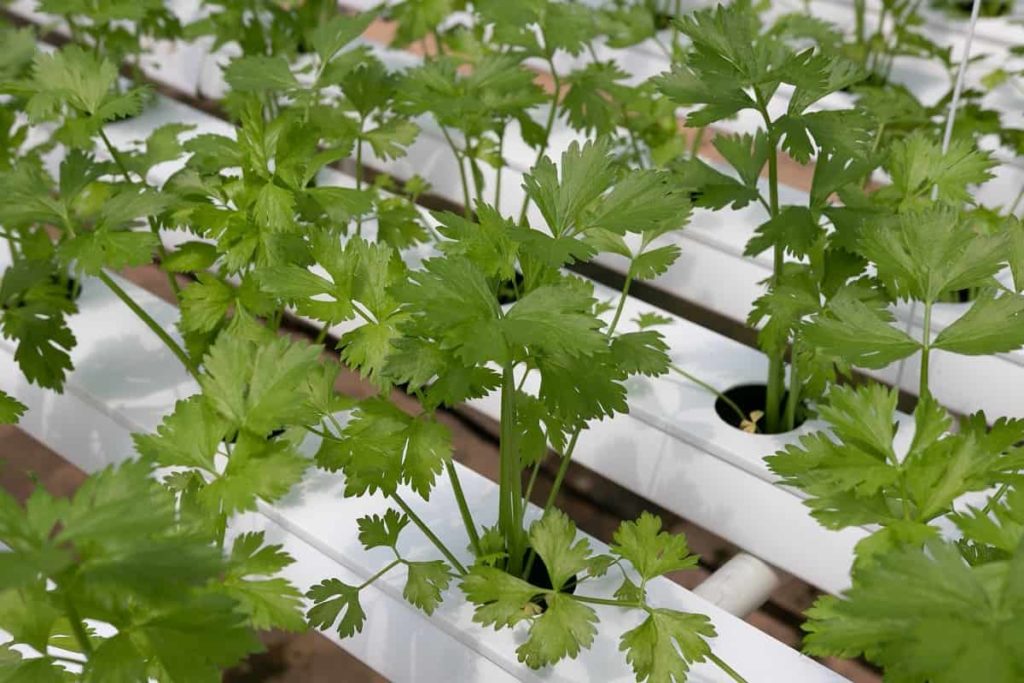
Many people’s perspective on gardening has shifted from a casual grower to a professional who relies on modern approaches and repeatable models to achieve year-round development. Hydroponic vegetable prices in India are also rising day by day as the demand for fresh and quality vegetables increases. Therefore, the resources accessible for hydroponics cultivation at home in Hyderabad should be thoroughly analyzed.
You must have access to enough room, temperature control, and a reliable light supply. All year-round crops can be cultivated thanks to this component. What can be grown in an apartment depends on the hydroponic equipment used. The apartment’s green area can be improved in this manner. There are a variety of hydroponic kits available in Hyderabad for residents to use in their homes.
Also, as hydroponics is gaining momentum, especially in metropolitan cities like Hyderabad, people wonder how to start hydroponics cultivation for commercial purposes. For these people, we have provided adequate information about the Hydroponic setup cost, details about training and contacts of the major supplier and training companies. Therefore, this article can guide you in calculating the hydroponics setup and investment finances.
What are the advantages of hydroponics?
Space conservation: A plant’s ability to obtain water and nutrients is dependent on its ability to extend its roots. This implies that they must be spaced away by a specific distance. Because water and nutrients are provided directly to the roots in hydroponic systems, the roots are not required to spread. Hydronic systems can thus produce more plants in the same area as soil-based ones, so they’re more popular.
In case you missed it: Earning Up to 3 Crores Per Year from Soilless Farming: A Success Story of a Hydroponic Farmer in India
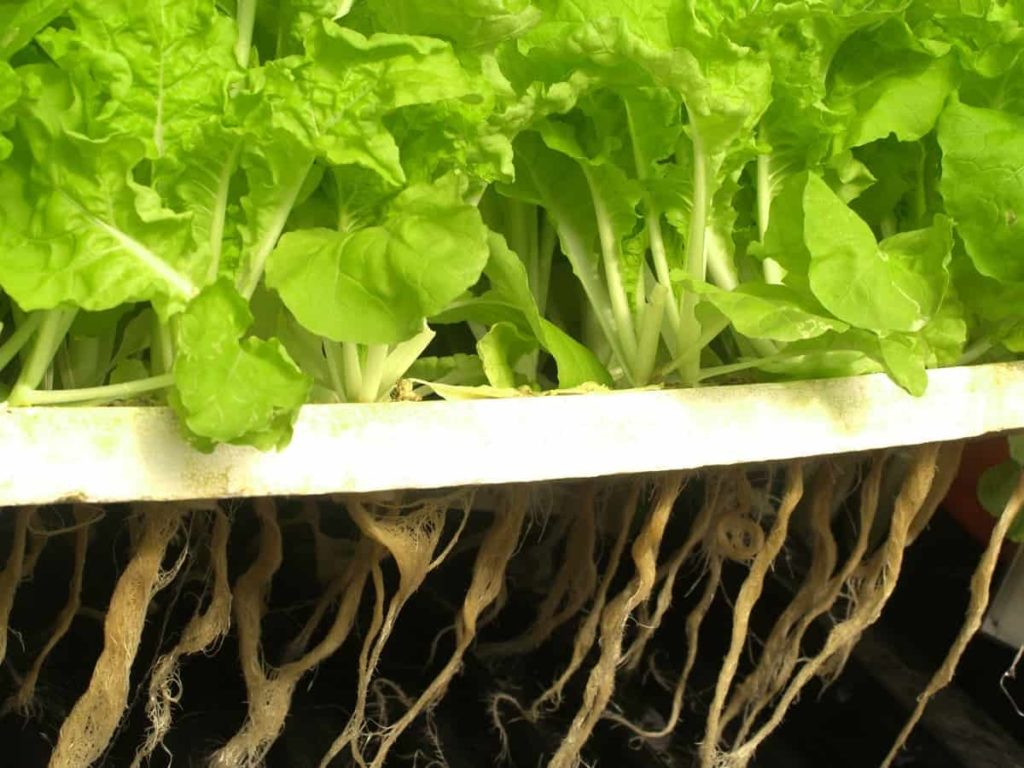
Water conservation: Field farming requires a lot of water since so much of it is lost. Much of the water on the ground is lost through evaporation, erosion, and forming puddles. How much is that? It takes around ten times less water in hydroponic systems since it’s provided precisely. Then specific systems recirculate water, further lowering water use.
Fast growth rate: Hydroponic systems allow plants to develop 30 to 50 percent quicker than those cultivated on the soil due to the optimum quantity of nutrients and the lack of environmental stress. Hydroponic systems benefit leafy greens like lettuce and water-loving crops like tomatoes.
Better nutrient control: Farmers can better regulate the nutrients their crops absorb using hydroponic systems, which use fertilizer solutions combined with water. Fertilizers may be required to ensure the survival of soil-grown cultivars. On the other hand, hydroponics provides that plants are given exactly the support they need at the correct time. As a result, the crops will have all they need to survive if you do your homework and take accurate measurements.
Fewer chemicals: Even though hydroponic systems don’t eliminate insect problems, they reduce the likelihood of occurring, reducing the number of pesticides and herbicides needed. Weeds have little chance of taking over hydroponic systems since they are tightly managed. The consequence is that herbicides are unnecessary. In addition, pesticides aren’t essential since hydroponic systems are frequently kept inside, where pests are less likely to infect the plants.
High yields: In a hydroponic system, more plants may be grown in a smaller area, resulting in higher yields per square foot. Having healthier and faster-growing plants means more products can be produced more quickly. After the first harvest, plants that continue to produce can be picked several times since indoor circumstances allow for year-round growth regardless of weather or season.
Growing indoors: As a further advantage, you can grow hydroponic crops at home without a large space. Growing inside has its benefits, including the capacity to grow year-round, managing the temperature and atmosphere, and fewer pests.
Better quality plants: Hydroponic gardening produces healthier plants than traditional soil-based methods. In hydroponics, soil-borne infections aren’t a concern since there is no soil to fester and spread in. In addition, plants can dedicate more energy to growth since they don’t have to dig through the soil in quest of nutrients.
What are the disadvantages of hydroponics?
Expensive: A hydroponics system is more costly to buy and install than a typical garden. Costs vary based on the selected system, size, and whether it is prefabricated or manufactured from individual components.
Requires constant maintenance and close supervision: Hydroponics demands more monitoring and supervision than conventional plant cultivation. Lights, temperature, and several parameters of the nutrient solution, such as pH and electrical conductivity, must be monitored constantly to provide a carefully regulated growth environment. In addition, the nutritional solution must be drained and changed periodically to avoid accumulation and blockage.
In case you missed it: How to Get Hydroponic Farming Subsidy: Up to 50%, and License to Start
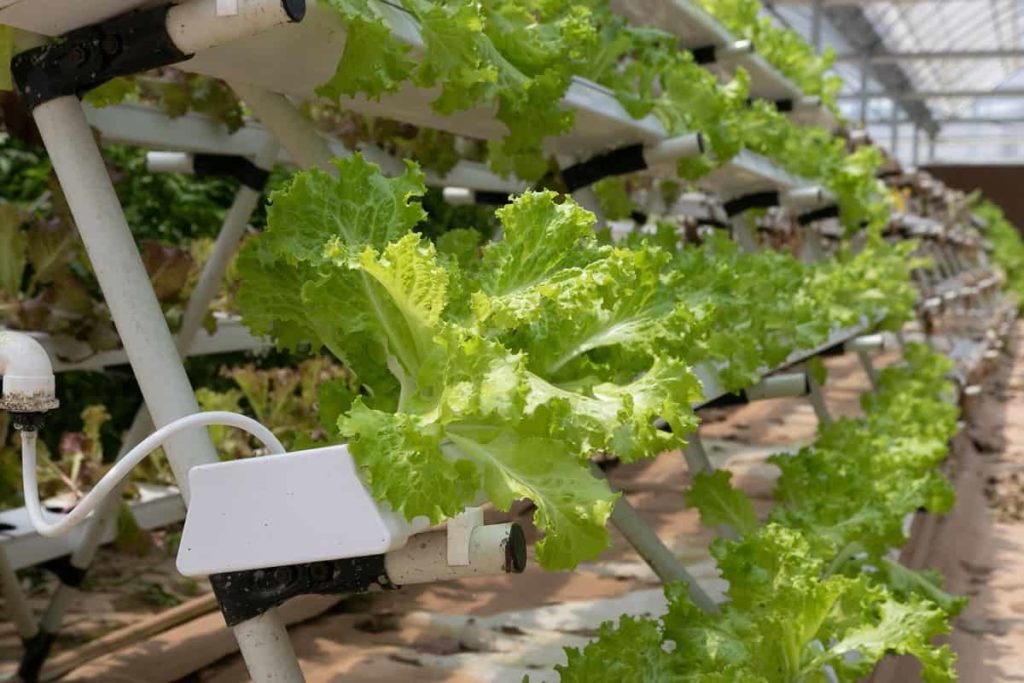
Water diseases: Due to the lack of soil, waterborne diseases are more prevalent in hydroponically cultivated plants. Infections can rapidly spread throughout the growing system, damaging the whole collection of plants due to the constant circulation of water. The waterborne disease can quickly destroy all plants in a hydroponic system.
Problems affect plants faster: Soil protects roots from drastic temperature fluctuations and delays disease and insect attacks. Hydroponically grown plants respond more quickly without soil to buffer against nutritional deficits and disease.
Highly dependent on power: Hydroponic systems use energy to operate components like grow lights, water pumps, aerators and fans. So, a power loss affects the whole system. In addition, inactive systems, and a power outage might harm plants if undetected by the grower.
Hydroponic farming setup cost
Land requirements for hydroponic setup
You’ve got two choices. You can either purchase land or lease land. If you already own property, you’re in a better position. Near the city, one acre of agricultural property can be rented for anything from Rs.10000 to Rs.16,000 a month. Ensure the property has access to water, power, and a road to make it easier to go to the market before closing the purchase.
Hydroponic farm structure
Outside weather disturbances are kept at bay, and the hydroponic farm’s outer structure creates a thriving micro-ecosystem for plant growth. There are three main structures required to set up a hydroponic farm.
- NVPH: An NVPH (Naturally Ventilated Polyhouse) is a construction that uses natural sunlight to control its interior temperature.
- Temperature-controlled polyhouse: Temperature-controlled polyhouse is equipped with temperature-control devices to maintain a stable interior climate.
- Net houses: Net houses are structures that protect crops solely from pests and direct sunshine.
For an acre, a temperature-controlled polyhouse would cost between Rs. 55 and 60 lacs depending on the material selected, which is around Rs. 1400 a square meter. NVPH, on the other hand, charges Rs. 900 to 1000 per square meter and Nethouse, Rs. 600 to Rs. 700.
NFT channels details for hydroponics
Calculating NFT channel length for one acre
NFT channels might be as long as we can fit in a single Acre to make the most out of our investment. Approximately 43,560 square feet (or 4,046 square meters) make up one acre. If we assume a square site, each side would measure around 63 M. We won’t be able to use the entire area. The border-spacing, nutrient tanks, control units, and structural walls will take up some of this area.
Let’s assume a useful space of 3,600 square meters for simplicity. We’ll use a horizontal bench-type architecture for NFT channels on a single level rather than a vertical or A-frame design to simplify the calculations. First, we’ll figure out how many Horizontal NFT Frame benches can cram into the available space. Using this analogy, you can think of these benches as classroom tables. Each desk is a hydroponic NFT frame in the 60×60 M-sized classroom.
The classroom is divided into rows and columns of desks. We will now attempt to determine how many unique rows and columns our 60×60 M classroom can accommodate. We must first identify the desk’s size and the distance between rows and columns.
In case you missed it: Common Mistakes Made in Hydroponic Farming: Things to Avoid for Beginners
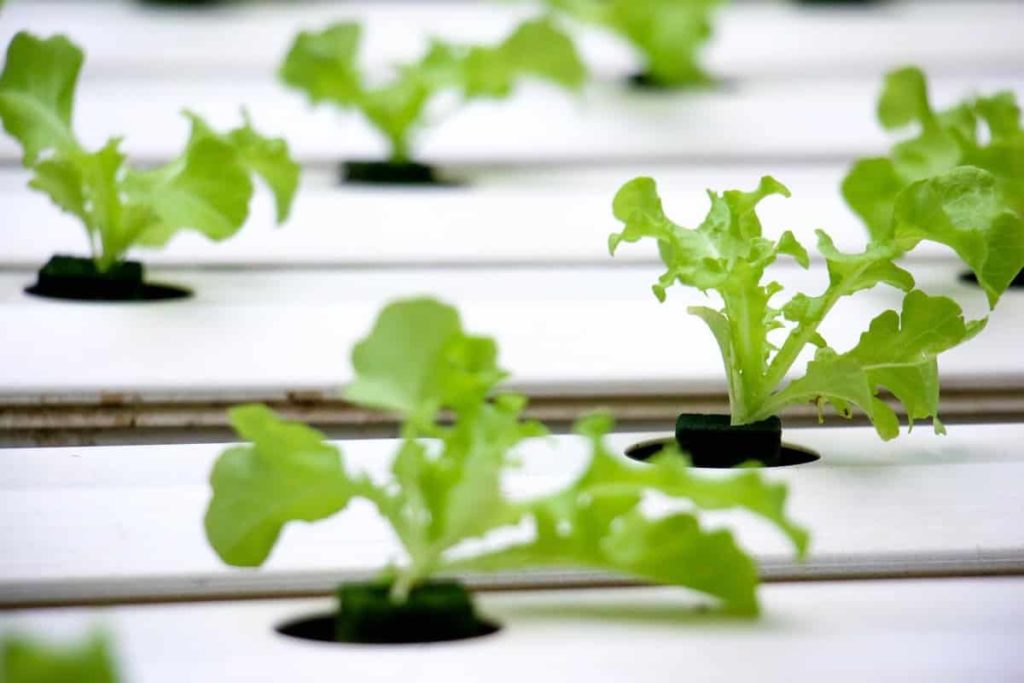
Cost requirements for NFT channel lengths
If your growing system is 3500 square meters, you’ll need around 18,000 meters of NFT channel. Good quality NFT channel constructed of food-grade material costs between Rs. 160 and Rs. 190 per meter. It costs between Rs. 30 lakhs and Rs. 34 lakhs to build 18,000 meters. Dutch buckets or media-based grow bags may be necessary for fruit or vegetable plants if you intend to cultivate them. Depending on the plant species and the system type, these systems can cost anywhere from Rs. 2700 to Rs. 3400 per square meter.
Temperature control systems for hydroponics
Fan systems, temperature sensors, cooling pads, and water pumps make up the temperature-control system. A temperature-control system is necessary for hydroponic farms located in warm climates. The water pump and cooling system are the most expensive components.
The hydroponic farm’s cooling pads are supplied with water by the water pump, and the fans help to bring in the fresh air to reduce the temperature further. The hydroponic farm’s size affects the water pump’s power. To maintain the temperature of one acre of the hydroponic farm would cost between Rs. 10 lakhs and Rs 14 lakhs.
Other extra costs
Endcaps for NFT channels, the stand or frame to support NFT channels, plumbing connections, labor and service charges of professionals you will engage in the installation, etc., are all extra expenditures that must be considered. It’s easy to spend another 8 to 12 just by adding these seemingly minor components.
The total hydroponic setup cost calculations
For outer structures
You have to choose from the following three options depending on the type of hydroponics farm you will establish.
- NVPH cost ranges from Rs. 35 lakhs to 38 lakhs
- Temperature-controlled polyhouse cost ranges from Rs. 55 lakhs to Rs. 60 Lakhs.
For growing systems
The cost for an NFT system ranges from Rs. 30 lakhs to Rs. 35 lakhs.
For temperature controlling systems
The cost for temperature control systems ranges from Rs. 10 Lakhs to Rs. 12 Lakhs.
Based on your choices, you can add up the total costs to estimate the rough figures of the total setup cost to establish a hydroponic farm. You can estimate the hydroponic farming cost per acre in India.
Hydroponics setup cost at home
You can also install a hydroponics setup at home. This can take minimal cost compared to setting up a hydroponics farm for commercial cultivation. Hydroponic kits are available for people thinking of setting up a mini hydroponic farm in their apartments, individual houses, etc. These home kits can cost somewhere between Rs. 20,000 and Rs. 50,000. These are available in Hydroponic farming companies like Urban Kisan in Hyderabad. You can also order these hydroponic home kits from the official website of Urban Kisan.
Training in hydroponics
Importance of Hydroponic farming in Hyderabad
For newcomers, hydroponics might be a challenging prospect. One must be educated in hydroponics before beginning a farm to minimize losses. Starting a hydroponics farm without sufficient understanding might lead to confusion since many criteria are involved in growing a crop in hydroponics. Hydroponics training can assist you in better understanding the different needs of each plant you deal with.
In case you missed it: Top Hydroponics Companies in India

What crops need and how a hydroponic system can provide for them will be covered in training. You will learn about the differences between hydroponic agriculture and traditional agricultural practice methods during your training. These elements, such as soil pH, temperature, and humidity, might help you better understand how plants grow. The many hydroponic methods of growing your vegetables will also be covered.
Yes, there are types in hydroponics too. A fundamental understanding of site selection and temperature management will be provided via hydroponics training. You can also learn about packing, transport, and supplier information by getting trained in hydroponics.
Hydroponic training centers in Hyderabad
Kamala f\Farms
- Address: Plot No 587, Road No 32, Aditya Enclave, Venkatagiri, Jubilee Hills, Hyderabad
- Website: http://www[dot]kamalafarms[dot]com
UrbanKisan Farms
- Address: 4th Floor, 36 Urban Centre, Rd. 36, CBI Colony, Jubilee Hills, Hyderabad – 500033 Telangana
- Website: https://www[dot]urbankisaan[dot]com
List of Hydroponic companies and equipment suppliers in Hyderabad
Infinity hydroponic green farms (IHG farms Pvt ltd)
Address Laxmi Ganga Enclave, Jeedimetla, Hyderabad, Telangana 500067
Urban Kisan farms
Address: Urban center, 4th floor 36, Rd Number 36, CBI Colony, Jubilee Hills, Hyderabad, Telangana 500033
In case you missed it: Growing Herbs Hydroponically – Farming Practices
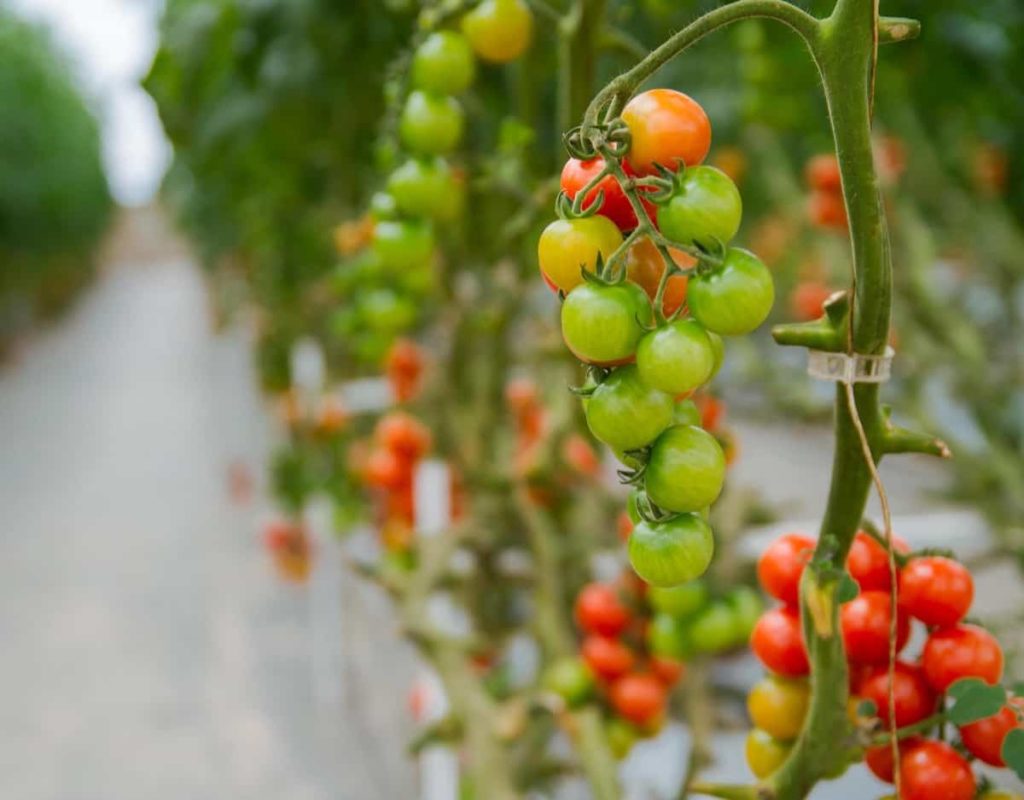
Kamala farms
Address: 122A, NBT Nagar Rd, no.12, Banjara Hills, Hyderabad, Telangana 500034
Navakisan Agri Farms Pvt. Ltd.
Address: Plot No 28 & 29, Near Ramalayam Temple, Pradham Puri Colony, Hyderabad, Telangana 500062
- Economical Aquaculture: A Guide to Low-Budget Fish Farming
- 15 Common Planting Errors That Can Doom Your Fruit Trees
- How to Make Houseplants Bushy: Effective Tips and Ideas
- Innovative Strategies for Boosting Coconut Pollination and Yield
- Pollination Strategies for Maximum Pumpkin Yield
- The Complete Guide to Chicken Fattening: Strategies for Maximum Growth
- Natural Solutions for Tulip Problems: 100% Effective Remedies for Leaf and Bulb-Related Issues
- Revolutionizing Citrus Preservation: Towards a Healthier, Greener Future
- Natural Solutions for Peony Leaf and Flower Problems: 100% Effective Remedies
- Maximizing Profits with Avocado Contract Farming in India: A Comprehensive Guide
- Natural Solutions for Hydrangea Problems: 100% Effective Remedies for Leaf and Flowers
- The Ultimate Guide to Choosing the Perfect Foliage Friend: Bringing Life Indoors
- From Sunlight to Sustainability: 15 Ways to Use Solar Technology in Agriculture
- The Ultimate Guide to Dong Tao Chicken: Exploring from History to Raising
- The Eco-Friendly Makeover: How to Convert Your Unused Swimming Pool into a Fish Pond
- Mastering the Art of Delaware Chicken Farming: Essentials for Healthy Backyard Flocks
- 20 Best Homemade Fertilizers for Money Plant: DIY Recipes and Application Methods
- How to Craft a Comprehensive Free-Range Chicken Farming Business Plan
- Brighten Your Flock: Raising Easter Egger Chickens for Beauty and Bounty
- How to Optimize Your Poultry Egg Farm Business Plan with These Strategies
- Subsidy for Spirulina Cultivation: How Indian Government Schemes Encouraging Spirulina Farmers
- Ultimate Guide to Raising Dominique Chickens: Breeding, Feeding, Egg-Production, and Care
- Mastering the Art of Raising Jersey Giant Chickens: Care, Feeding, and More
- Ultimate Guide to Raising Legbar Chickens: Breeding, Farming Practices, Diet, Egg-Production
- How to Raise Welsummer Chickens: A Comprehensive Guide for Beginners
- How to Protect Indoor Plants in Winter: A Comprehensive Guide
- Ultimate Guide to Grow Bag Gardening: Tips, Tricks, and Planting Ideas for Urban Gardeners
- Guide to Lotus Cultivation: How to Propagate, Plant, Grow, Care, Cost, and Profit
- Agriculture Drone Subsidy Scheme: Government Kisan Subsidy, License, and How to Apply Online
- Ultimate Guide to Raising Araucana Chickens: Breed Profile, Farming Economics, Diet, and Care
- Bringing Hydroponics to Classroom: Importance, Benefits of Learning for School Students
- Ultimate Guide to Raising Polish Chickens: Breed Profile, Farming Economics, Diet, and Care
- Ultimate Guide to Raising Australorp Chickens: Profile, Farming Economics, Egg Production, Diet, and Care
- Silkie Chicken Farming: Raising Practices, Varieties, Egg Production, Diet, and Care
- Sussex Chicken Farming: Raising Practices, Varieties, Egg Production, Diet and Care
- Homemade Feed Formulations for Livestock: Discover Cost-effective Starter to Finisher Feed Recipes
I have 15 acre land in District Uttrakhand. We can start with 3 or 4-acre land.
I want to give my land on lease for hydroponic cultivation or I can be a working partner.
Please guide.
Information shared is really very helpful.
I want training